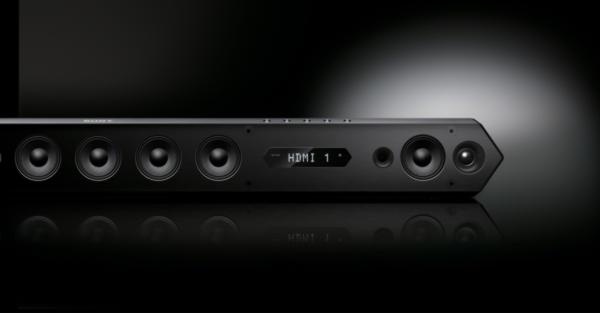A Soundbar Bill of Rights

There are several angles from which to approach it. The reader might wonder: What kind of features and performance am I entitled to get in a soundbar for what I'm willing to spend? A manufacturer, on the other hand, might ask: What kind of features and performance do you deserve to get in a soundbar for what you're willing to spend? But the angle that most appeals to me is: What would I want in a soundbar? That may sound pathologically selfish, but it's the one that really allows me to subjectivize and speak my mind. So let's go with that.
HDMI and lossless surround: Yes, this is me subjectivizing. I want video switching in general, and HDMI in particular, because I want the bar to take the place of an AV receiver, accepting input from source components and outputting to the TV. I don't want my bar to subsist on whatever PCM or Dolby Digital dross the TV is willing to output through its optical or analog jacks. As for lossless surround, I live in a Blu-ray world. That's what Netflix delivers to my mailbox. So I want my bar to process DTS-HD Master Audio and Dolby TrueHD. Granted, this pretty much excludes a whole class of bargain-basement bars that use legacy jacks to connect through a TV. And whether the lossless difference is audible through a bar is debatable (depending on the bar). But that's what I want in a soundbar. Anything less and I might as well be using a simple pair of powered speakers (which is, in fact, how I run my TV when my receiver-based system is off).
Treble control: Here we move onto what is probably more common ground. As a reviewer, I am constantly frustrated by lack of adjustability in soundbars. Due to the limits of their drivers, enclosures, and design budgets, soundbars often have less linear response, and more distortion, than speaker-and-receiver systems. I'd love to take the edge off a harsh top end with a treble control but rarely have the opportunity. Sound modes are a useful tool but are usually not an adequate substitute for a simple treble cut—they do too many things all at once whereas I'd like to just roll off the top end. And I'd like this control to have at least 10 increments of adjustment.
Bass control: Many manufacturers do provide a bass boost, though typically it has only a few increments of adjustment. Other provide a subwoofer level control, which comes pretty close to the functionality of a bass control, though ideally I'd like to adjust the bar's and sub's bass in tandem so they'll dovetail together. Subs that audibly detach from their bars are distracting.
Boundary compensation: A good soundbar has to function with either a wall mount or a table mount. These two positions have different acoustic requirements. The requirements might be addressed with room correction, but that's an elaborate and expensive solution for what is usually a low-cost product. I'd settle for boundary compensation instead: just a few minor tweaks to account for differing amounts of proximity to the wall.
Decent subwoofer: Most soundbars, even some expensive ones, come with miserable subs. I wouldn't mind paying more for a better sub, with a thicker enclosure, more driver excursion, more power, maybe even crossover and phase controls.
Subwoofer output on bar: If the product's design budget wouldn't allow for a better sub, I'd at least like to have a sub upgrade path. That requires a wired sub output on the bar. Wireless sub connectivity is a popular feature, but it makes upgrading the sub impossible, because one brand's sub won't wirelessly connect to another brand's bar. I want to be able to buy a better sub, and not necessarily from the manufacturer who made the bar.
Low-resonance enclosure: At least at the higher end of the price range, I'd like my bar to have a solid enclosure. I don't care whether it's fiberboard, metal, or even cleverly braced plastic, as long as it colors the sound as little as possible. This is basic loudspeaker design.
Foot angle adjustment: As a table-mount kind of guy—poking holes in the wall would violate my lease—I'd like to adjust the bar to aim slightly upward at the seating position. Some bars do this with rocking cradles, others with angled feet. But still others do not provide the option at all, and that is bad. The more adjustable, the better.
Non-membrane remote with AAA battery: Membrane remotes are a pain. I prefer the tactile response of mechanical buttons. And I prefer the remote to run on AAA batteries, even if they make it larger, because I can test them in a battery tester and easily find replacements at many local stores. No watch batteries, please. It's bad enough having them in my watches.
Now that you know what I want in a soundbar, what do you want in a soundbar? On-topic comments welcome, as always.
Audio Editor Mark Fleischmann is the author of Practical Home Theater: A Guide to Video and Audio Systems.












































